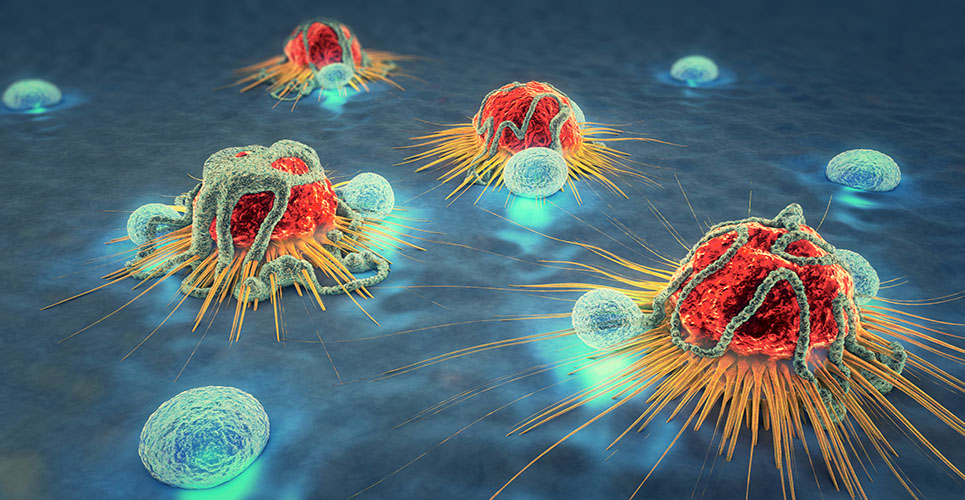Maxwell Summerhayes
BPharm PhD MRPharmS
Principal Oncology Pharmacist
Guy’s and St Thomas’ Hospitals
London, UK
Most hospitals in Europe prepare “patient-ready” doses of cytotoxic drugs in centralised pharmacy areas equipped with handling facilities, such as negative-pressure isolators or downward displacement laminar airflow cabinets.
Unfortunately, even in the best-run departments, accidental spills occur. It is important that these are dealt with properly, since a single spilt dose will result in the release of far more drug than many hours of routine preparative work.
A risk assessment should be carried out regularly – once a year is reasonable – in all areas where cytotoxic drugs are stored, dispensed or administered. One of the purposes of this is to spot and resolve procedural or environmental problems that, if uncorrected, could result in spills. Typical questions to consider during a routine risk assessment include:
- Will the packaging contain any leaks in transit?
- Are all cytotoxics stored together to allow their ready identification in the event of an incident?
- Are stocks stored well back from shelf edges?
- Are cytotoxic waste containers leakproof and robust?
- Are the materials used to finish floors in likely spill areas impermeable and easily cleaned?
Staff in areas where spills are possible must be aware of the formal procedure for dealing with such incidents and have ready access to a spills kit. Kits are available from commercial suppliers, but it is easy to assemble your own, which should contain:
- Step-by-step guidance on how to deal with a spill.
- Plastic overshoes.
- A dust mask.
- Disposable gloves.
- Safety glasses/goggles with side protection.
- A disposable impermeable gown or plastic apron and gauntlets.
- An absorbent pillow (2-litre capacity) or liquid absorption granules.
- Cytotoxic waste receptacles, including a sharps bin for broken glass.
A stepwise approach to containing and clearing up spills should be followed:
- Anyone not clearing up the spill should vacate the area, which, as far as possible, should be sealed off.
- Put on disposable protective clothing (impermeable gown, hat, overshoes, gloves, dust mask) and eye protection to prevent contamination during clean-up. Two pairs of gloves should be worn.
- Any personal contamination should be dealt with first by removing any contaminated clothing and then washing any contaminated skin thoroughly with large amounts of soap and water. Contamination of the eyes should be dealt with by irrigating the eye with copious amounts of fluid for at least ten minutes. Sterile isotonic saline is best for this purpose, but sterile water or tap water can be used in an emergency. This immediate first aid should be followed by an urgent ophthalmic referral.
- If it is a dry powder spill, reduce airflow in the area (close doors and windows, turn off fans and air conditioning) to prevent powder spread.
- Use forceps to pick up any broken glass and transfer to a suitable sharps container ready for disposal.
- If the spill is dry powder, cover with moist paper towels or cloths to damp down and prevent spread.
- If the spill is a wet spill, absorb liquid using absorbent paper for small spills; use absorbent pillows or absorption granules for larger spills.
- Clean up spill with routine cleaning techniques using copious amounts of water and detergent. Work inwards from the edge of the spill to avoid spreading it. A sufficiently large area should be cleaned to encompass any splashes or dust spread not visible to the naked eye. This type of cleaning is relatively easy on hard surfaces, but where textiles and carpets are involved, consideration should be given to disposal of the contaminated material. Chemical inactivation cannot be recommended in view of the variety of drugs involved and the lack of validation of inactivation techniques in workplace situations.
- All cytotoxic contaminated material should be properly disposed of according to local policy (usually incineration at a temperature exceeding 1,000˚C).
After the clean-up, reflect on how the incident happened and whether changes in procedures or training might have prevented it. If so, implement changes.
Resources
Allwood M, Stanley A, Wright P, editors.
The cytotoxics handbook.
Oxford: Radcliffe Medical Press; 2001.
MARC Guidelines
A UK-based website giving evidence-based guidelines
for managing the health and safety risks associated with cytotoxic drugs
as well as access
to a risk assessment audit tool
W:www.marcguidelines.com

